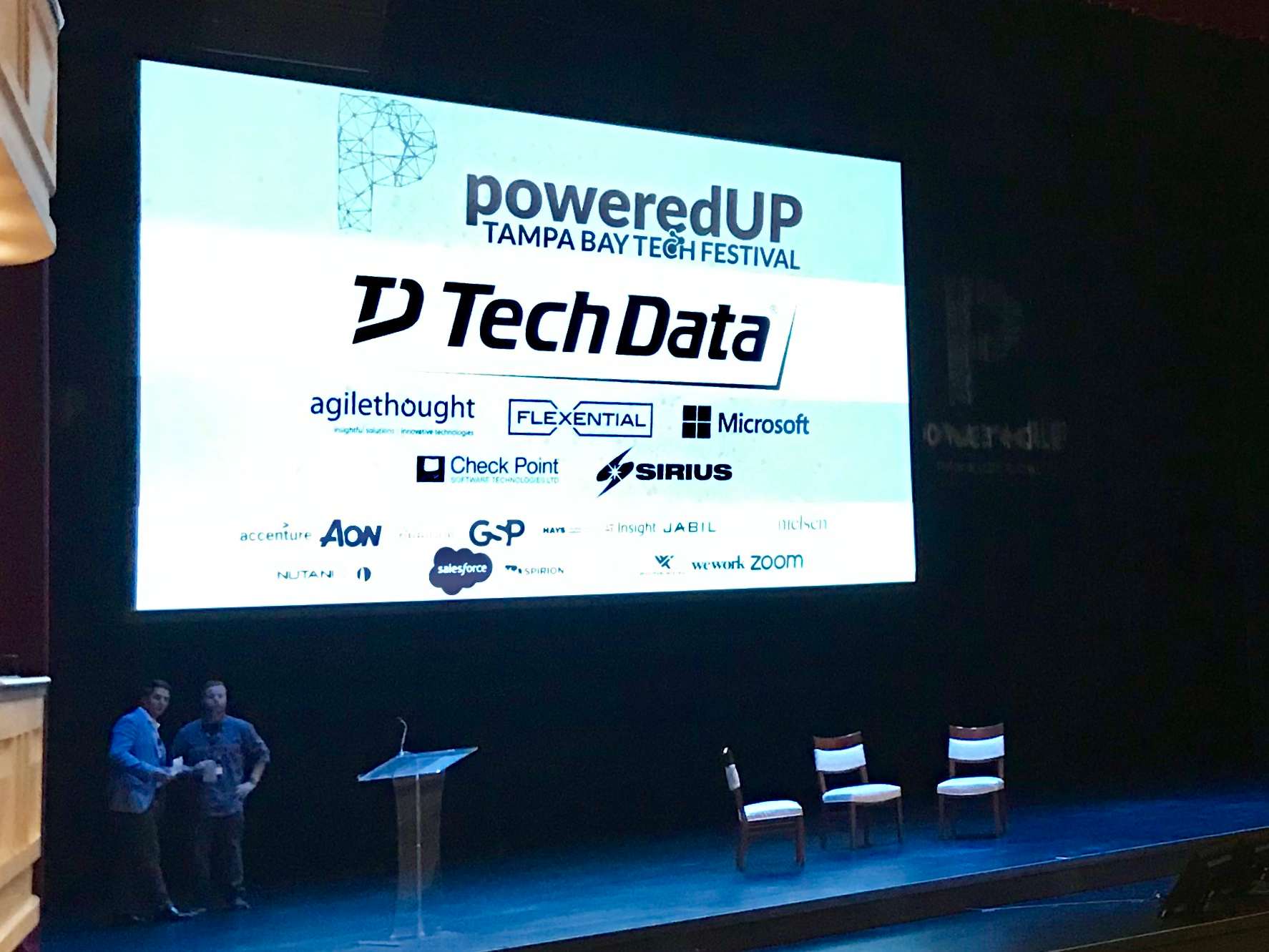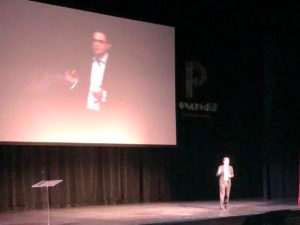Innovate
Customer focus dominates keynotes at poweredUP

Successful companies pay attention to their customers.
That was a big takeaway from two technology leaders who gave keynotes at Tampa Bay Tech’s poweredUP technology festival Thursday in St. Petersburg.
Deep understanding of customers, and empathy with them, is one of three keys to successful innovation, said Otto Berkes, co-founder of Microsoft’s X-Box and developer of video streaming platform HBO Go.
Keeping in mind who a product is for has become a main theme in the career of Spence Murray, whose work as a lead browser developer and a lead Unix browser developer at Netscape in the 1990s is chronicled in the National Geographic series Valley of the Boom.
“The internet prior to the web was the domain of researchers, scientists and hardcore geeks, but it also provided an incredibly powerful way to communicate with people all over the globe,” Murray said. At Netscape, “We set out to try to introduce the world to the web.”
The process was fraught with problems, he said. He recalled one particularly difficult issue that required the entire Netscape team to stop work on everything until the problem was solved.
“I was amazed by what could happen if a team rallied around an idea – not necessarily something they set out to build but something that’s absolutely necessary for the customer … The customer was the focus and this became a major theme for me in my career,” said Murray, now instigator at Salesforce.
Customer focus now is even more important than it was more than 20 years ago, he said.
“The world depends on the web. The world depends on phones and on things working. Customer focus has to be the top priority.”
Innovation
There are some common misperceptions about innovation, said Berkes, an influencer driving digital transformation for businesses worldwide, according to a 2016 profile in Forbes, when he was chief technology officer for CA Technologies. He now runs his own firm, Bog Bridges LLC, a digital transformation consulting company.

Otto Berkes
Innovation is not simply replacing an old way of doing something with a new way of doing the same thing, and it’s not just the latest and greatest technology, although technology is a tool that enables innovation.
“The real goal of innovation is to stay ahead of competition and the changing needs of your customers,” Berkes said. “The real challenge of innovation is to create the right conditions in your organization to enable it to thrive.”
That requires what he called “the three C’s.”
Customers. “You have to deeply understand and empathize with your customers. That’s the only way you are going to uncover their unmet needs and wants … You have to identify gaps in what you are building for them and fill those gaps quickly.”
Culture. “That culture needs to be naturally inquisitive. It needs to fearless about questioning the status quo. It has to be able to ask the ‘what if’ questions. Innovation requires creativity but it needs to be based on a foundation of data and objective assessment. And innovation requires continuous learning.”
Commitment. Take educated risks and see them through, knowing that most bets are going to fail, Berkes said. “You have to take the long view. The overnight successes you occasionally hear about are the exception, rather than the norm, and you have to be ready to invest with payoffs that are years down the road.”
There are innovation killers, Berkes said. He cited “zombie projects,” those that have gone on so long that people don’t remember why they were started. Investing in a bad idea or a weak idea also can be disastrous. One-shot bets on innovation programs won’t move the needle and will fail to produce anything of real value.
The fear of disruption can be paralyzing, Berkes said. “If you’re not thinking about investing in things that are self-disruptive, your competition is and will.”
Berkes offered some suggestions to plant the seeds for successful innovation.
- Formalize the process with a governance structure that provides robust oversight over innovation investments and makes funding decisions, including when to shut a project down.
- Consistent reliable support from a dedicated team or staff. That’s not the same as a group focused solely on innovation, which creates an ivory tower syndrome with the group disconnected from the needs of the business or its customers. A dedicated team of just a few people with experience in going through the innovation pipeline can increase the odds of success.
- Be inclusive. “You never know who will have the next great idea.”
- Think small. “Be careful not to overinvest too soon in an idea.” That includes talking to customers and potential customers about the value of an idea, then scaling up as an idea improves its value.
- Have clear and measurable goals that are reviewed at all stages of a process, and be transparent.
It all comes back to customers, culture and commitment, Berkes said.
“If you focus on building new customer value, building the right culture and behaviors, and make a deep long-term commitment to innovation, you will achieve continuous innovation that over time will integrate deeply into your DNA and the process of innovating at your company.”
Teams
After leaving Netscape, Murray said he had some interesting team-building experiences.

Spence Murray
“I had to balance my own desire to build stuff that was cool with building something that customers would actually want, and that would work for them. In order to do that, I focused very much first on my team members. They became my customers essentially,” he said.
Listening to team members is critical, he said.
“I chose this team, I chose this company, now I need to make sure all the good ideas in the room are being heard. Bring together all the best ideas, then focus on the end.”
It’s easier to do at small companies than big ones, Murray conceded, but when team-building is done right, it shows up in the products that are produced.
“I want to create products that makes the user feel like someone thought about my experience, someone wanted me to be more productive or more creative,” Murray said. “This is something that has to start from within. You have to build it into the DNA of your company and not only bring it in to the company, but find it within ourselves. Find that passion, that we do want to help people, to affect their lives in a positive way.”







